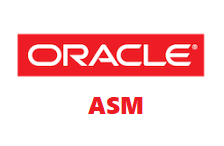We recently ran into a bug (at least that how I look at it) that is introduced with ASM 11.2.0.3. As of this version,
ASM shows slice 2 (the complete disk, starting a cylinder 0 thus inlcuding the VTOC) as an CANDIDATE disk in ASM.
In previous versions of ASM (Grid Infra) only slices that started from cylinder 3 (or higher) where shown as CANDIDATE disks in ASM,
so you couldn’t accidently select slice 2 to be used for a diskgroup.
In ASM 11.2.0.3 it is possible to add the slice 2 (for example *c0t0d0s2) to an ASM diskgroup while another slice of the same disk,
starting at cylinder 3, is already part of the same or even another diskgroup. You can understand what a mess this gives!
 Example partition table of solaris disk, where until 11.2.0.3 you would only see partition (slice) 0,
Example partition table of solaris disk, where until 11.2.0.3 you would only see partition (slice) 0,
starting at cylinder 3 (see MOS note: ASM Does Not Discover Disk on Solaris [ID 368840.1]).
|
1 2 3 4 5 6 7 8 9 10 11 12 |
Current partition table (original): Total disk cylinders available: 13651 + 2 (reserved cylinders) Part Tag Flag Cylinders Size Blocks 0 root wm 3 - 13650 49.98GB (13648/0/0) 104816640 1 unassigned wu 0 0 (0/0/0) 0 2 backup wu 0 - 13650 49.99GB (13651/0/0) 104839680 3 unassigned wm 0 0 (0/0/0) 0 4 unassigned wm 0 0 (0/0/0) 0 5 unassigned wm 0 0 (0/0/0) 0 6 unassigned wm 0 0 (0/0/0) 0 7 unassigned wm 0 0 (0/0/0) 0 |
ASM (11.2.0.3) discovers the following disks now. Take a good look at the disk number of the MEMBER disks and CANDIDATE disks:
|
1 2 3 4 5 6 7 8 9 10 11 12 13 14 15 16 17 18 19 20 21 22 |
SQL> select path,header_status from v$asm_disk order by 1,2; PATH HEADER_STATUS -------------------------------------------------- --------------- /dev/rdsk/c3t60060E8005492800000049280000319Dd0s0 MEMBER /dev/rdsk/c3t60060E8005492800000049280000319Dd0s2 CANDIDATE /dev/rdsk/c3t60060E8005492800000049280000319Ed0s0 MEMBER /dev/rdsk/c3t60060E8005492800000049280000319Ed0s2 CANDIDATE /dev/rdsk/c3t60060E8005492800000049280000319Fd0s0 MEMBER /dev/rdsk/c3t60060E8005492800000049280000319Fd0s2 CANDIDATE /dev/rdsk/c3t60060E800549280000004928000031A0d0s0 MEMBER /dev/rdsk/c3t60060E800549280000004928000031A0d0s2 CANDIDATE /dev/rdsk/c3t60060E800549280000004928000031A6d0s0 MEMBER /dev/rdsk/c3t60060E800549280000004928000031A6d0s2 CANDIDATE /dev/rdsk/c3t60060E800549280000004928000031A7d0s0 MEMBER /dev/rdsk/c3t60060E800549280000004928000031A7d0s2 CANDIDATE /dev/rdsk/c3t60060E800549280000004928000031A8d0s0 MEMBER /dev/rdsk/c3t60060E800549280000004928000031A8d0s2 CANDIDATE /dev/rdsk/c3t60060E800549280000004928000031A9d0s0 MEMBER /dev/rdsk/c3t60060E800549280000004928000031A9d0s2 CANDIDATE /dev/rdsk/c3t60060E800549280000004928000031CBd0s0 MEMBER /dev/rdsk/c3t60060E800549280000004928000031CBd0s2 CANDIDATE |
I have created an SR for this problem, but until then you’ll have the following options:
- Set the ASM_DISKSTRING parameter to /dev/rdsk/*s0 (or whatever slice you normally use)
- Make sure the user grid does not have any privileges on the /dev/rdsk/*s2 devices.
Update 26-02-2013:
Oracle Support finally came back with an answer and a patch.
The most important thing is that they agree that this is actually a bug and created a bug (bug nr. 14577881) for it.
Support tells me that the problem is “really” fixed in Oracle 12.2 (when even 12.1 is not even released yet ;-)) but they have created a backport request for it.
I just got back that the backport is available as a one-off patch downloadable as patch 14577881 for 11.2.0.3.
